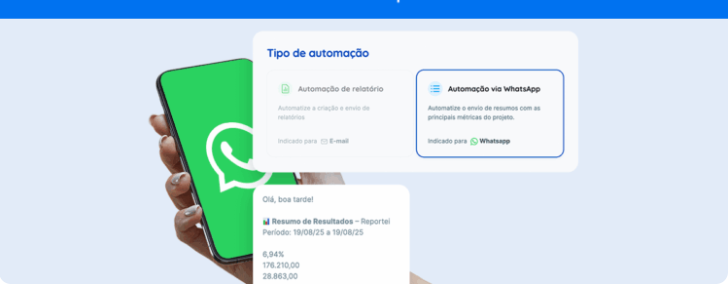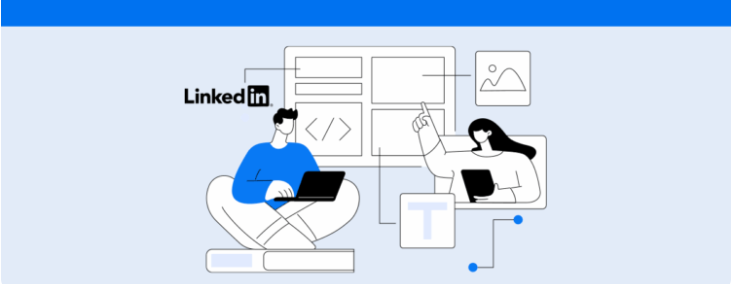By Julia Sales – Customer Success at Reportei
When I joined the Reportei team at the end of September 2017, I didn’t know how my life would change (for the better!). I was getting my journalism degree, and I fell into this job, I confess. But I was very excited and eager to see where I could go and how I could help Reportei to go even further.
I believe that from all the questions and uncertainties surrounding us in college and all the assumptions and expectations we create, I never imagined that I would be working in the SaaS business. And when I came to the team, I worked where they needed most: customer service or support.
The company did not yet have the structure of a Customer Support area, and I started to develop it. Now, over a year on this team, I decided to share here my experience of the first year and also some tips for those who are embarking on something similar, I hope the post can yield useful insights. =D
I started working in a company and am responsible/working in the Customer Service/Support area, where do I start?
Know the product
There’s nothing more important than knowing the product your business sells. This not only helps you to be in that “world,” but helps you better understand the demands after all the product is responsible for much of the satisfaction or dissatisfaction that the customer can acquire over the time they are with you. As soon as I entered, I did some tests, wrote what I found, and talked to the developers. After all, my questions could be the same as those of new users/customers and, besides being in the company, I could contribute to some improvements.
So knowing the product, its tools, functions, possibilities are the minimum you need to build an initial connection with your customer. When you have a relationship with your customers, you can understand requests and have access to frequent feedback and insights for improvement. This is critical for the Support team, along with the Customer Success team (if the company has it, here at Reportei we are starting to structure this area, so far it’s a mix of successful support and customer relationship, but we can make another post about it later =D), help the development area understand which way to go for product evolution.
Customer Support
At the beginning of Reportei, customer service was done by Rodrigo, who is also a developer and one of the minds behind Reportei. As he had all the control of questions and suggestions, he managed to work well all this at the beginning of the development of the tool. This contact with customers was significant. However, over time, it became unfeasible to serve customers with quality and work on development as well. That’s when I arrived! =)
Rodrigo already had a way to treat customers, and based on everything I observed and read in the exchanges, and I structured the Support in Reportei. I have improved some things, and we are continually working on improvements (on the tool as a whole).
“Investing in this type of service is assuming that as important as investing so that certain services do not present a problem, is having a specialized and trained team to know how to inform, guide, and present solutions when they are needed. Customer support, much more than just an industry for problem-solving, should be seen as an addition to the quality of the product or service provided.”
I saw that in some text that I read at the beginning of this “journey” and agree. Here in Reportei, the service became a differential, and I mean it, many customers and even people who did not get to hire the tool have already given this feedback. (amazing, by the way, and I almost burst with joy! =D)
Now for some crucial tips for Customer Service
Agility (with quality, please!) – If you are “online” (working), why not answer right away?
This tip is one of the most common mistakes in online service, but it seems simple. We have “proof” with group complaints at Facebook from companies that fail or have failed at some point in the service, and customers said they regret having even referred the tool to someone else.
So what helps you understand the importance of this “tip” is thinking about your own needs as a customer. When you encounter a problem or have any questions, you want to be answered as soon as possible, and if there is a problem, that it gets solved as quickly as possible, right?
Thinking that way, the longer this service is delayed, the more you lose (wholly or partially) – the desire to be a customer, right? So this “exercise” is the first step in thinking and directing your Service in the best way possible. But that’s all, of course, without neglecting the most important thing: quality.
Show attention, ask, understand the problem, and always stand on the customer’s side. Short and/or sparse dialogue can waste customer and company time inefficiently. Be cordial, always with a good day/good afternoon; sometimes, kind words can calm and make this customer’s day more enjoyable.
Of course, you can optimize some answers to frequently asked questions. In the tool we use for customer communication, Intercom, we were able to save some answers/instructions. This helps a lot in these questions or frequently asked questions, but as I pointed out, it is interesting that these “ready answers” are customized for each customer. =)
Language (attentive to the customer) – Is being youthful, friendly, relaxed, and dangerous at the same time possible?
As I told you when I entered Reportei, Rodrigo answered customers and solved everything, and I realized the way he used the language in these messages and emails. When I really started to respond and take care of the Service, I followed what was being done, but always improving over time. I believe that today Reportei already assumes a language of its own. (This does not mean that we do not need to improve it further! It is essential always to grow!)
And how is this language? Ah, our style is youthful, but we have not lost the seriousness and a certain initial formality. As in Reportei, we have varied audiences, from a traditional agency to a freelance student or recent graduate, you need to adapt and understand these customers. And how do we perceive this? Just talking to the customer. That’s why the original language is more “serious” and formal, but we never lose cordiality and playfulness – we use emojis and smiley faces to “break the ice” and bring the customer closer.
Within this topic, it is essential to highlight essential qualities for members of this team: patience and calmness. It sounds silly, but there are moments (in Reportei I admit that there aren’t many) that people appear very desperate and crazy for an almost automatic resolution and in these cases, it is even difficult to understand what is happening and, consequently, it is difficult to help solve the situation quickly. Trying to pass the calmness and patience to the customer maintains a lot.
There are also some bad comments; at this point, we have to ponder as well. The rule that the consumer is always right is not still correct. But we need to act by showing that what the person says is important and that we will do everything to resolve the situation or take that comment/criticism as a suggestion for improvement. I believe every company should think like this, and here at Reportei, we are always working to improve the tool, and we never forget the importance of the customer in this process.
Last but most importantly: Transparency – Admit the mistakes!
Reportei, like most serious companies, wants customer trust (and here we have done it with many). We know this is the best marketing, so we will be able to acquire more customers and retain those who are already our partners. That is why transparency is crucial. If you make a mistake, recognizing it is much better than trying to disguise it. And again: we are always working to improve the tool. We learn from mistakes.
If the personal comments about dissatisfaction, you need to respond gently and try to understand what happened (I talked about it above). The important thing is to try to understand the details of what happened and work as hard as possible to solve them. And even without having any resolution to the problem right away (after all, sometimes it takes a more detailed analysis of a technician or developer, and it may take longer), the customer can come out with the right image.
I believe that the most important thing we should always remember: putting yourself in someone else’s shoes is the best exercise!


